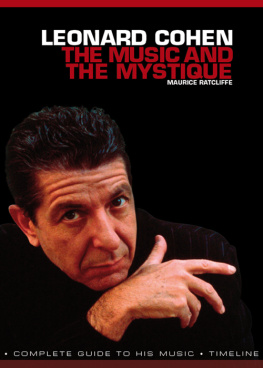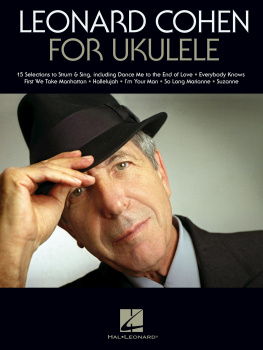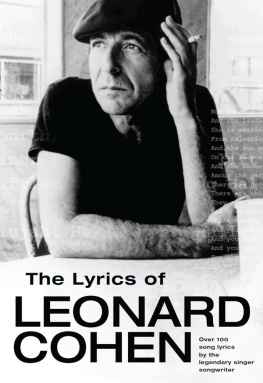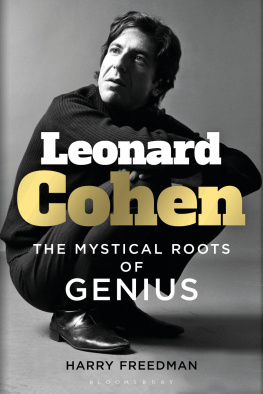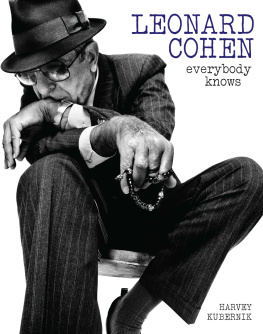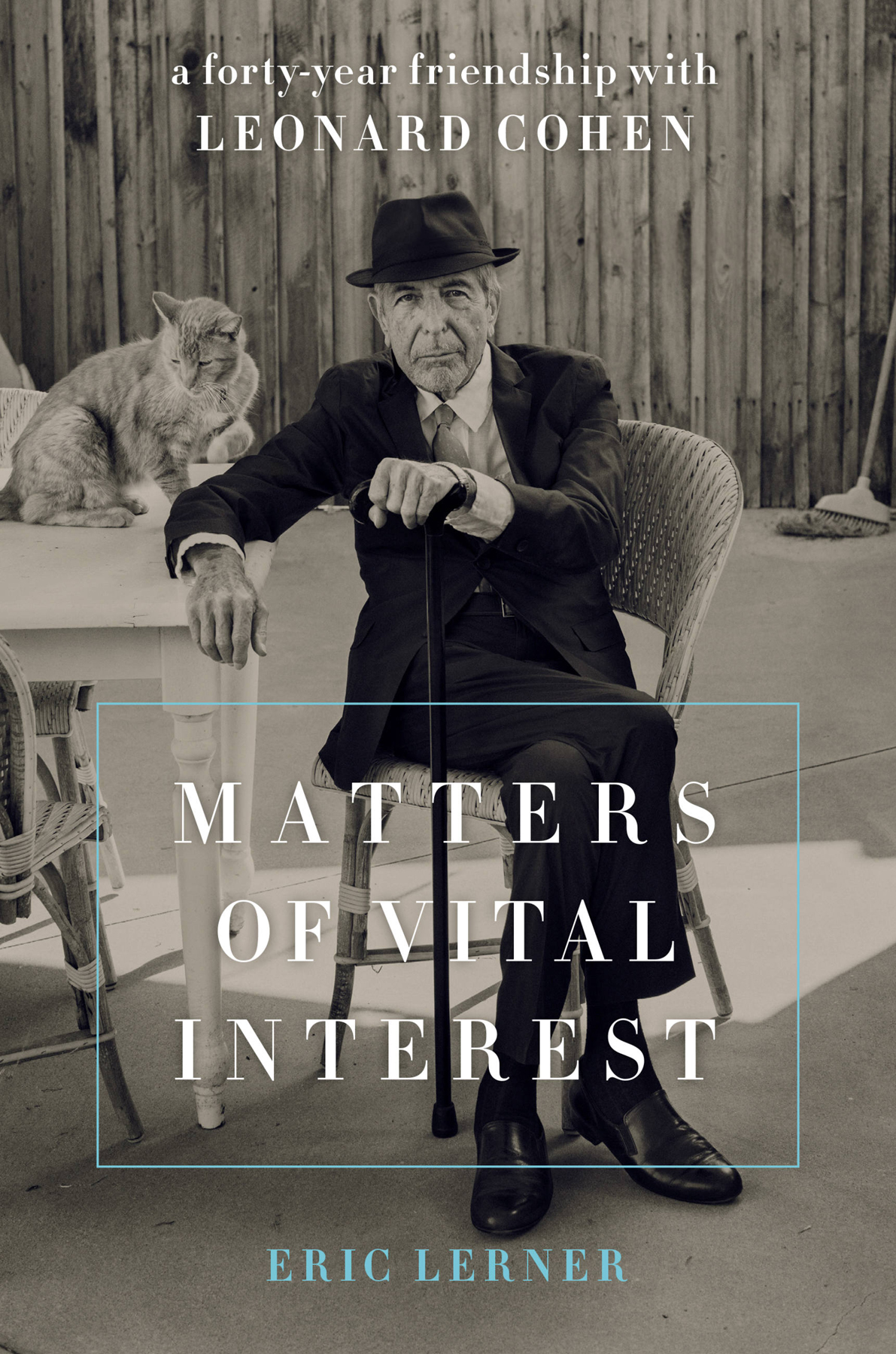Copyright 2018 by Eric Lerner
Excerpt of poem by Allen Ginsberg Allen Ginsberg, LLC.
Used with permission.
Hachette Book Group supports the right to free expression and the value of copyright. The purpose of copyright is to encourage writers and artists to produce the creative works that enrich our culture.
The scanning, uploading, and distribution of this book without permission is a theft of the authors intellectual property. If you would like permission to use material from the book (other than for review purposes), please contact permissions@hbgusa.com. Thank you for your support of the authors rights.
Da Capo Press
Hachette Book Group
1290 Avenue of the Americas, New York, NY 10104
www.dacapopress.com
@DaCapoPress; @DaCapoPR
First Edition: October 2018
Published by Da Capo Press, an imprint of Perseus Books, LLC, a subsidiary of Hachette Book Group, Inc. The Da Capo Press name and logo is a trademark of the Hachette Book Group.
The Hachette Speakers Bureau provides a wide range of authors for speaking events. To find out more, go to www.hachettespeakersbureau.com or call (866) 376-6591.
The publisher is not responsible for websites (or their content) that are not owned by the publisher.
Library of Congress Cataloging-in-Publication Data
Names: Lerner, Eric, author.
Title: Matters of vital interest: a forty-year friendship with Leonard Cohen / Eric Lerner.
Description: First edition. | New York, NY: Da Capo Press, 2018.
Identifiers: LCCN 2018007895| ISBN 9780306902703 (hardcover) | ISBN 9780306902710 (ebook)
Subjects: LCSH: Cohen, Leonard, 1934-2016. | Lerner, Eric. | ComposersCanadaBiography. | SingersCanadaBiography. | BuddhistsBiography.
Classification: LCC ML410.C734 L48 2018 | DDC 782.42164092/2 [B]dc23
LC record available at https://lccn.loc.gov/2018007895
ISBNs: 978-0-306-90270-3 (hardcover), 978-0-306-90271-0 (ebook)
E3-20180909-JV-PC
For all the kids
S AINT J OSEPHS A BBEY IN Spencer, Massachusetts, is a magnificent complex of fieldstone buildings surrounded by rolling acres of working farmland, a monastery of the Catholic Cistercian Order of the Strict Observance, whose monks, popularly known as Trappists, live a cloistered life of prayer and contemplation. In the 1970s some of the more eclectic members of the order invited the Japanese-born Rinzai Zen master Joshu Sasaki Roshi to visit the abbey once a year and lead them in an intensive Zen retreat known as sesshin.
Joshu Sasaki Roshi came to America in 1962, dispatched by his superiors at a prestigious temple in Japansome later said it was to get rid of the troublemakerin response to a request for a teacher from a small group of Southern California Zen enthusiasts. He arrived speaking no English, carrying a beat-up old Japanese-English dictionary. His supporters established Cimarron Zen Center a few years later in a dicey part of Los Angeles not far from the scene of the 1965 Watts riots. In 1971 the group purchased an old Boy Scout camp about an hour east of the city, high up an eight-thousand-foot mountain. The Mt. Baldy Zen Center was intended to re-create the atmosphere and training practice of a traditional Japanese Rinzai Zen monastery.
Rinzai is a distinct school of Zen, which is a distinct school of Buddhism. In its formal practice, Rinzai demands the precise execution of every ritualized group activity. Students wear identical black Zen robes and sit in meditationzazenin the zendo, the meditation hall, on identical black mats and cushions facing each other in parallel rows, everyone maintaining the identical meditation posture: spine erect, legs in half or full lotus, hands cupped with the thumb tips touching at the top of an open circle held above your navel, never dropping into your lap. Head is tilted slightly down. Eyes are half open, focused on a spot on the floor in front of you, never, ever wandering, especially in the direction of anyone else. Once zazen commences there is no moving, no sniffling, no coughing. Any infraction is subject to the immediate disapproval of the officer of the zendothe jikijitsuwho periodically shouts: No moving! Quiet!
At times he prowls the zendo carrying a polished flat wooden stick, elbows flared like a samurai swordsmans, as if daring a student to nod off or let his hands fall. Then he pounces, lightly tap-tapping the shoulder of the miscreant. Mutual bows precede the famous Rinzai whacking with the stick. The chastised student bows again in thanks. The jikijitsu stalks on.
Walking meditation is similarly choreographed: hurry up in lockstep, hands held tightly chest-high, a long, black caterpillar marching around outside the zendo no matter the weather. Group meals in their exacting formality of silent bows and hand gestures are no break at all from the intense concentration on not fucking up. The purpose of all this, along with the sleep deprivation, is to induce a profound desperation that convinces you to launch some kind of kamikaze attack on your ego.
It is not Mindfulness for Corporate Advancement or a form of stress reduction. Its not supposed to make you feel particularly better until you break through in an instantaneous flash of enlightenment.
Satori.
At any rate, thats the hype.
Summoned by the rhythmic sound of heavy wooden clappersslow and ominous at first to grab your attention, then steadily increasing in tempo to cause panicthe Zen students filed into the makeshift zendo, a carpeted reception room of the abbey repurposed for this informal session. I was among the half dozen first-time students stumbling at the doorway to make sure we correctly executed our newly learned bows before finding our places, bowing again, and getting into zazen posture as the sesshin commenced. It was April 1977.
I didnt realize that the spot Id claimed next to the window was directly opposite the jikijitsu, the zendo leader, until I noticed the low table placed beside the empty cushion with a bell, an incense holder, and a lighter. I heard footsteps descending the stairway behind me. Keeping my head down as instructed, I stared at his bare feet. His lower body dropped into the frame of my vision. I could see his hands make sharp, sweeping movements as he snapped the hem of his robe over his knees and tucked it under his feet, turning himself into an impressive black pyramid. I lifted my gaze surreptitiously to glimpse his face.
It was Leonard Cohen.
Really?
His was a famous face, prominently displayed on the cover of his first record album that everyone owned in 1968, his thick helmet of black hair hanging practically to his dark brows over eyes with sparkles of light staring at you, the Semitic nose protruding over curious curved lips in a pose reminiscent of a nineteenth-century French poet. Id heard nothing new from him since his second album in 1969, the one with the white cover and Bird on the Wire on it. I had no idea what hed been doing since, but his face was older, tighter, leaner and more purposeful.
The zendo leader is supposed to act as if hes not even breaking a sweat during the days arduous schedule to make everyone else feel even worse. Leonard sported a look of placid, resigned indifference, even when his feet fell asleep and he struggled to rise to lead the group out of the zendo for the regimented walks. His robes looked as if theyd been pressed each morning, and his white collar remained crisp and spotless for the entire week.


